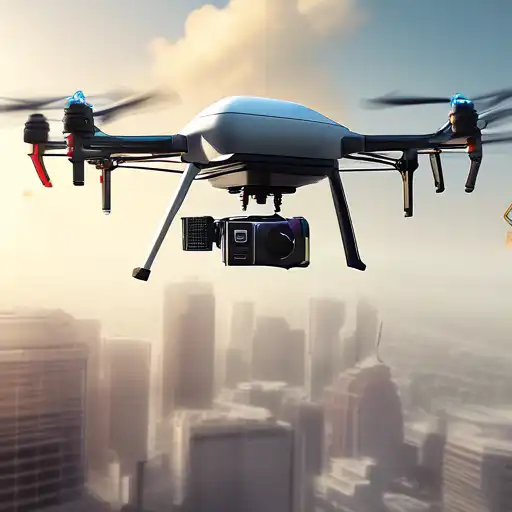The Rise of Commercial Drones
Commercial drones, also known as unmanned aerial vehicles (UAVs), have surged in popularity across various industries. From agriculture to real estate, these flying devices are revolutionizing the way businesses operate. The ability to capture aerial footage, deliver goods, and monitor large areas with precision has opened up a plethora of opportunities for companies worldwide.
Opportunities Unleashed by Commercial Drones
The applications of commercial drones are vast and varied. In the agricultural sector, drones are used for crop monitoring, spraying pesticides, and even planting seeds. The construction industry benefits from drones through site surveying, progress tracking, and inspecting hard-to-reach areas. Meanwhile, in the delivery sector, companies like Amazon and UPS are experimenting with drone delivery services to expedite shipping times.
- Agriculture: Precision farming, crop health monitoring, and irrigation management.
- Construction: Site surveys, progress monitoring, and safety inspections.
- Delivery Services: Fast and efficient package delivery to remote areas.
- Photography and Videography: Capturing stunning aerial shots for media and real estate.
Navigating the Regulatory Framework
Despite the opportunities, the use of commercial drones is subject to strict regulations to ensure safety and privacy. In the United States, the Federal Aviation Administration (FAA) requires commercial drone operators to obtain a Part 107 certification. This involves passing a knowledge test and adhering to operational limitations, such as flying below 400 feet and keeping the drone within visual line-of-sight.
Internationally, regulations vary by country, but common themes include no-fly zones, privacy laws, and insurance requirements. It's crucial for businesses to stay informed about the latest drone laws to avoid hefty fines and legal issues.
Future Prospects and Challenges
The commercial drone industry is poised for exponential growth, with advancements in technology paving the way for more sophisticated applications. However, challenges such as air traffic management, privacy concerns, and battery life limitations need to be addressed to fully realize the potential of drones.
For businesses looking to integrate drones into their operations, partnering with experienced drone service providers can help navigate the complexities of regulations and maximize the benefits of this innovative technology.
As the industry evolves, staying ahead of trends and regulatory changes will be key to leveraging the opportunities presented by commercial drones. Whether it's enhancing operational efficiency or exploring new business models, the sky's the limit for drone technology.
